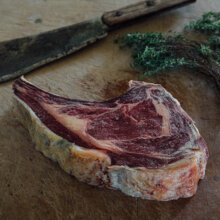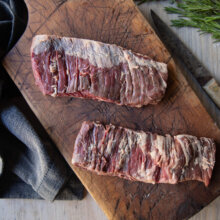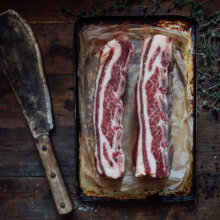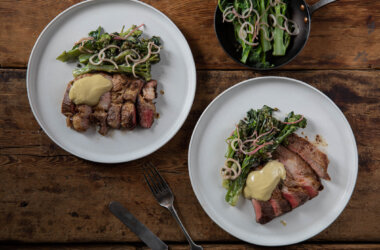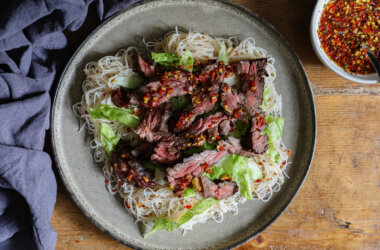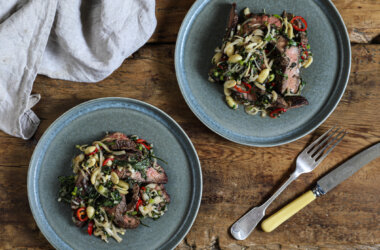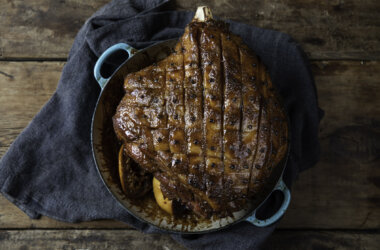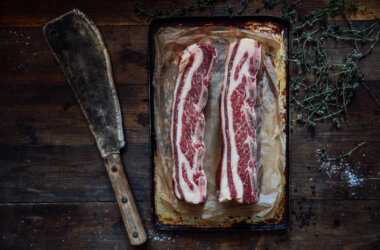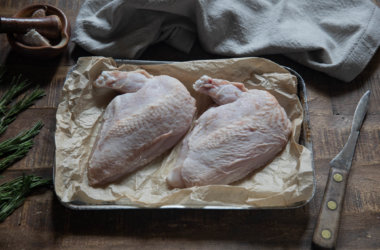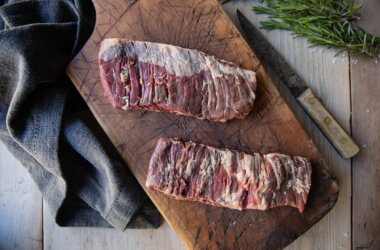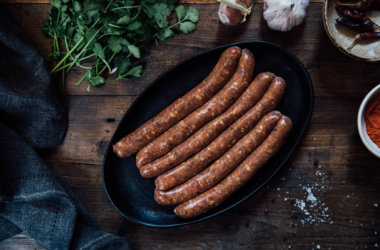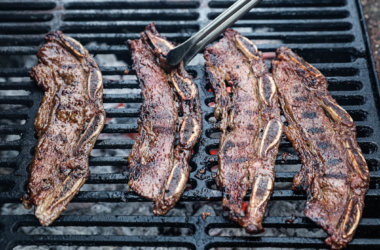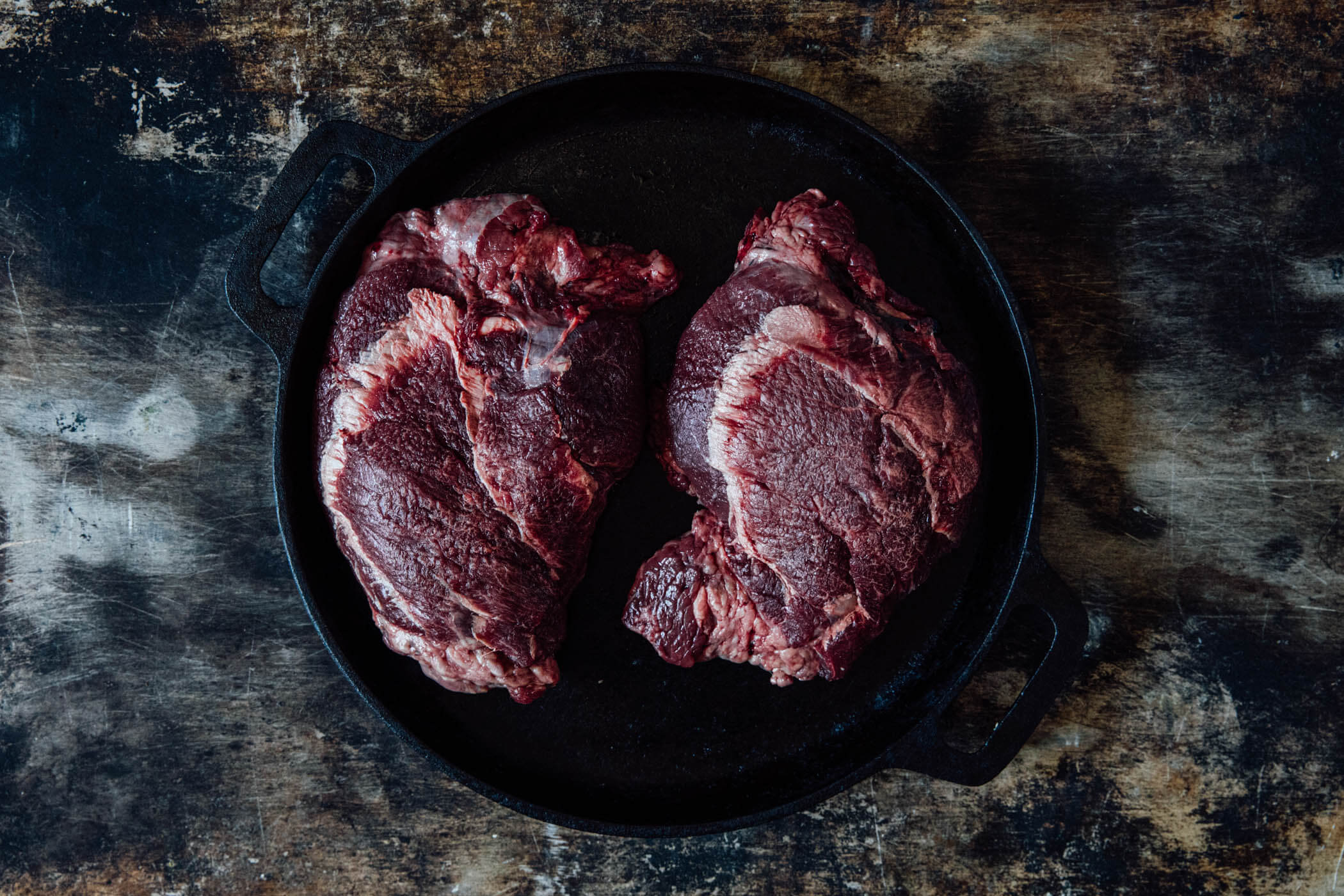
What is ox cheek?
An ox cheek, as the name suggests, is the meat from the cheek of a cow. Although referred to as ‘ox’, do not be fooled, these cheeks are from cows rather than an ox. Most beef offal is referred to as ox, for example ‘ox hearts’, ‘ox tongue’ and ‘oxtail’ – it is a quirk of the trade. A cow spends a lot of its life grazing on grass, which means that the muscles in their cheeks are very well exercised. This results in lean, dense meat that is absolutely perfect for a long slow cook.
Are ox cheeks healthy?
As well as being totally delicious, ox cheeks also happen to be extremely nutritious. They are an excellent source of low fat protein, as well as being naturally rich in both iron and zinc.
How long to cook ox cheeks?
There is only really one way to proceed here and that is slow cooked ox cheek. The cheek is a very hard working muscle and therefore needs a long gentle cook to break down the muscle and sinew that run through the cheeks. Happily, when these do break down, you are left with meat that is tender, gelatinous and melting. This process will take at least 4 hours in a medium to low oven, preferably in a braise with stock.
What is the best way to cook ox cheek?
Follow this recipe for a simple, classic ox cheek dish:
- Remove the cheeks from their packaging and pat dry with a cloth or some kitchen towel.
- Season 3 tablespoons of plain flour with sea salt and black pepper.
- Toss the cheeks in the flour and then brown in a large casserole with a little oil and butter.
- Once browned, remove the cheeks from the pan and add some roughly chopped carrots, onions, celery and garlic and cook until softened.
- Return the cheeks to the pan, along with 2 bay leaves and a star anise. Add red wine and homemade chicken or beef stock, bring all to a simmer and then transfer to an oven that is preheated to 130°C for 4-5 hours.
- Remove from the oven and leave to sit for half an hour before serving. Mash potatoes would be an excellent side dish.
Top tips when cooking ox cheeks
- Browning the cheeks well in oil or butter before braising will help to give the final dish a real depth of flavour.
- To check the cheeks are cooked, take a knife and insert it into a cheek and then twist it ever so slightly. The cheek should offer little to no resistance.
- If the braising liquid seems a little loose, then carefully remove the cheeks and return the pan to the stove to reduce.
Recipes for ox cheek
Try Val Warner’s ode to a French country kitchen, with this braised ox cheek, flageolet beans & turnips recipe. Or, the cheeks would make for a fantastic version of a classic Boeuf Bourguignon. Or, with inspiration from the other side of the globe, why not an ox cheek rendang?
